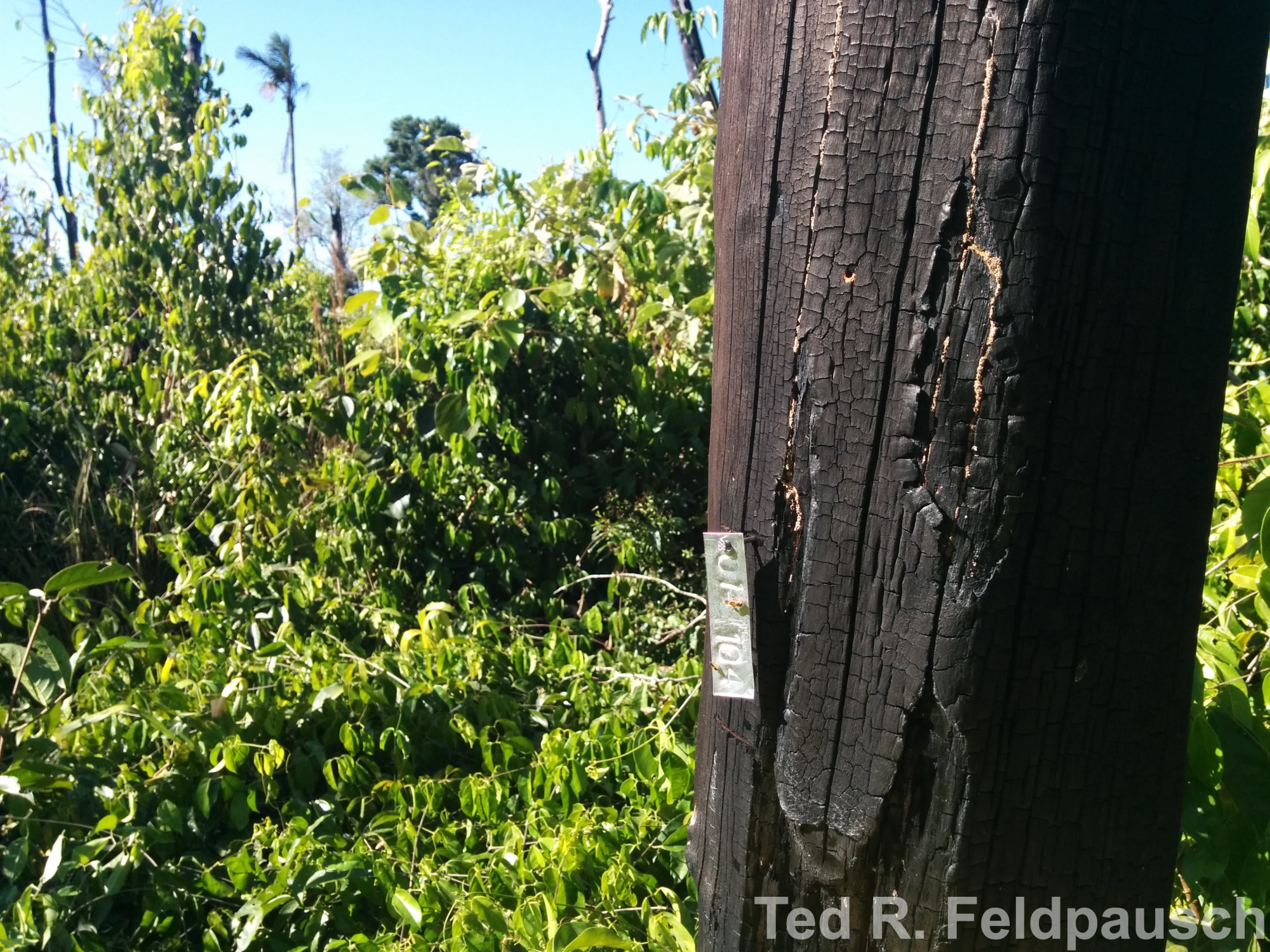
Posted by Ted Feldpausch
7 June 2021Research at the University of Exeter examines how measurements of charcoal reflectance can be used to understand fire regimes and carbon dynamics in tropical forests in South America.
Drought and fire have affected large areas in Amazonia, with record drought in 2005, 2010, and 2015. Charcoal was collected from trees and soil in forests in southern Amazonia in Brazil and southwestern Amazonia in Peru that had burned a single or multiple times. Permanent forest plots were also set up to evaluate how wildfires changed forest composition, structure, and biomass storage.
Charcoal formed in wildfires carries information on its origin embedded in its molecular structure; the greater degree of heating it has undergone, the more the structure is altered to resemble graphite. This transformation can be quantified by measuring the reflectivity of the charcoal using a microscope spectrophotometer. Charcoals are embedded in resin before being ground and polished to achieve a perfectly flat surface from which accurate reflectance measurements can be taken.

Charcoal on the ground following wildfires in Amazonia (image credit: Dr Ted R. Feldpausch)
Previous research has shown that charcoal reflectance is determined by the intensity and duration of heating, and can be used to indicate the total heat received during a fire (Belcher et al., 2018). However, reflectance is also influenced by variation in the fuel materials, which makes it difficult to transfer results from one ecosystem to another. This method has only recently been applied to tropical environments (New et al., 2018). The current study, which focuses on several sites across the Amazon basin, will test and develop it in this new context.
Recent work (New et al., 2018) shows that charcoal reflectance may provide a useful metric closely linked to fire severity. The severity of a fire influences the subsequent forest structure and species composition, and this research aims to identify relationships between these parameters and the measured reflectance of the charcoal formed. Comparisons of charcoals obtained from recent fires with carbon-dated charcoals from soil pits will also be used to assess whether reflectance values are stable over time in these environments, informing our understanding of the persistence of charred organic matter in tropical forest soils.
The study is a collaboration between Dr Ted Feldpausch’s research group and the University of Exeter’s wildFIRE lab led by Professor Claire Belcher, and the University of Mato Grosso State (UNEMAT) and Embrapa Paisagem Sustentavel Programme in Brazil, and US Forest Service, through funding from the CAPES Science without Borders Programme, Brazil, Natural Environment Research Council (NERC) and SilvaCarbon Fund. Charcoal specimens obtained from study sites across the Amazon Basin are currently being analysed by Dr Alastair Crawford, building on previous work carried out by Dr Stacey New in the course of her PhD.
The results will contribute to our developing understanding of the role of fire in the ecological dynamics of Amazonia, and the implications this has for the region’s carbon balance.
Text: Alastair Crawford & Ted R. Feldpausch
Header image: Ted R. Feldpausch
Additional reading:
Belcher et al. (2018) What Can Charcoal Reflectance Tell Us About Energy Release in Wildfires and the Properties of Pyrogenic Carbon? Frontiers in Earth Science, 6, 169; https://doi.org/10.3389/feart.2018.00169
Koele, N., M. Bird, J. Haig, B.H. Marimon-Junior, B.S. Marimon, O.L. Phillips, E.A. de Oliveira, C.A. Quesada, and T.R. Feldpausch. 2017. Amazon Basin forest pyrogenic carbon stocks: First estimate of deep storage. Geoderma 306:237-243.
New et al. (2018) Quantitative charcoal reflectance measurements better link to regrowth potential than ground-based fire-severity assessments following a recent heathland wildfire at Carn Brea, Cornwall, UK. International Journal of Wildland Fire, 27, 845–850; https://doi.org/10.1071/WF18112
Prestes, N.C.C.d.S., K.G. Massi, E.A. Silva, D.S. Nogueira, E.A. de Oliveira, R. Freitag, B.S. Marimon, B.H. Marimon-Junior, M. Keller, and T.R. Feldpausch. 2020. Fire Effects on Understory Forest Regeneration in Southern Amazonia. Frontiers in Forests and Global Change 3.